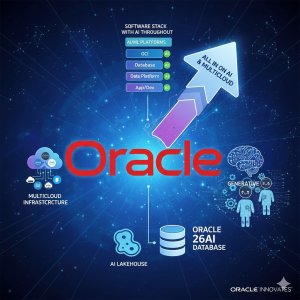As organizations continue to distribute applications and infrastructure across public clouds, private data centers, and edge locations, securing and managing workloads across these private and public cloud environments has become critical. Whether it’s an enterprise resource planning (ERP) system or business analytics applications, these workloads require robust security measures, consistent service delivery, and seamless performance monitoring. Achieving these goals, however, is becoming increasingly complex, especially when dealing with disparate infrastructure deployed across different cloud environments.
Gigamon recognized these struggles and created GigaVUE Enriched Metadata (GEM) for Cloud Workloads to overcome these challenges. The enriched metadata provides the ability to standardize workload monitoring, security, and performance management by drawing on workload context directly from cloud services and network traffic. At their recently held Visualyze Bootcamp customer conference, they outlined the value of enriched metadata and GEM for Cloud Workloads, highlighting that organizations can gain actionable insights to enable security compliance, accelerate zero-trust implementations, and improve user experiences, especially in highly dynamic environments.
Understanding the Role of Enriched Metadata
Gigamon discussed how in a cloud ecosystem, metadata—such as service labels, tags, and instance types—acts as a valuable resource for understanding what workloads are running and how they are performing. But to extract even more value from this metadata, organizations can “enrich” it with additional context, combining it with network traffic data and application-level information. This enriched metadata provides a more comprehensive view of cloud workloads, making it easier to monitor performance, identify vulnerabilities, and ensure security.
Enriched metadata can be gathered from various sources, including APIs, telemetry, and network traffic data. Businesses can overcome a wide range of challenges by efficiently delivering this enriched data into existing tools like observability platforms, SIEMs (Security Information and Event Management), and AI-driven analytics tools. As a result, businesses gain the deep observability they need to ensure compliance with industry standards, fortify security through zero trust, and enhance the customer experience in areas like 5G networks.
Examples of Real Business Problems Solved using Enriched Metadata
1. Enterprise Compliance – PCI DSS
One of the most pressing challenges for enterprises today is maintaining compliance with stringent security standards, such as the Payment Card Industry Data Security Standard (PCI DSS). PCI DSS is designed to protect sensitive credit card information, requiring companies to meet rigorous requirements and undergo frequent audits. How GEM helps:
- Enriched metadata can significantly streamline this compliance process. For example, Gigamon stated that organizations can use enriched metadata to automate the detection of weak encryption protocols or expired certificates. These issues are common in legacy systems or misconfigured infrastructure, where outdated encryption methods, such as weak ciphers, may still be used. By analyzing network traffic through enriched metadata, companies can quickly identify and resolve these issues, maintaining compliance with PCI DSS and protecting sensitive customer data.
- Beyond encryption, enriched metadata also helps automate reporting requirements for PCI DSS. Organizations can continuously track and report the use of secure transmission protocols, ensuring auditors have the documentation they need. This reduces the manual effort involved in compliance, allowing businesses to meet standards more efficiently while reducing the risk of human error.
2. Adopting Zero Trust – Government
Gigamon highlighted that government agencies, particularly in the U.S., are increasingly adopting a zero-trust approach to cybersecurity. Zero trust is a security architecture that assumes no actor—inside or outside the organization—should be trusted by default. Instead, every individual, device, and workload must be continuously verified.
One of the key mandates for zero trust in the government sector is OMB M-2131, a directive from the U.S. Office of Management and Budget. This mandate outlines strict requirements for logging and monitoring, requiring agencies to prove where data is going, who is accessing it, and how workloads interact within the network. How GEM helps:
- Enriched metadata is pivotal in helping government agencies meet these zero-trust mandates. For example, metadata from DNS (Domain Name System) queries can provide insights into which users or devices are requesting access to specific domains. By analyzing this metadata, agencies can detect unauthorized DNS servers or malicious requests that may indicate a security breach.
- Moreover, enriched metadata allows agencies to track activity down to the protocol level, ensuring that even low-level issues like port spoofing (where a rogue actor disguises network traffic to appear legitimate) are detected. This capability is critical for maintaining the continuous verification required by zero-trust models.
3. Enhancing Subscriber Experience – Service Providers
Gigamon has a long history of providing visibility to Service Providers, and GEM for Mobile Networks can play an important role. In the telecommunications sector, particularly with the rise of 5G networks, ensuring an optimal subscriber experience is crucial. Service providers must manage the user plane (the regular traffic subscribers generate while using applications) and the control plane (the signaling used to manage devices and subscribers on the network). How GEM helps:
- Enriched metadata allows service providers to correlate user-plane traffic with control-plane information, giving them a clearer picture of how users interact with the network. This is particularly important in emerging technologies like connected and autonomous vehicles, where service providers must ensure real-time performance across various applications.
- For instance, enriched metadata can help a provider identify which applications (e.g., streaming services like Netflix or Amazon) are being used in connected vehicles and by which devices or users. By understanding this level of detail, providers can not only optimize network performance to ensure low latency and high availability but also explore new revenue opportunities by offering personalized services or tiered access based on usage patterns.
- The ability to enrich metadata with control-plane and user-plane data opens new possibilities for service providers, from ensuring subscriber satisfaction to creating additional revenue streams.
Expanding the Use Cases of Enriched Metadata
Gigamon stated that the possibilities for enriched metadata extend far beyond the current use cases in enterprise compliance, zero trust, and telecommunications. As distributed and hybrid environments (private DC, edge, and public clouds) evolve, organizations want to integrate additional contexts, such as user identity, device management, and container workloads, into their metadata strategies.
For instance, by incorporating user identity metadata, businesses can gain deeper insights into who is accessing their network, their privileges, and whether they are authorized to perform specific actions. This enriched identity context can enhance cybersecurity protocols, improve compliance, and reduce the risk of insider threats.
Similarly, in environments that rely heavily on containerization (e.g., Kubernetes clusters), enriched metadata can help track workload performance, monitor application health, and ensure that security policies are consistently applied across containers.
In the future, enriched metadata will also play a crucial role in asset management and cybersecurity risk assessment. By providing organizations with a clear inventory of their IT assets, enriched metadata will help businesses understand what devices and workloads are in use, what vulnerabilities they may have, and how they fit into the broader security landscape.
The Enriched Metadata Mandate
Enriched metadata is quickly becoming an essential tool for managing the complexity of environments with cloud workloads. By combining workload context with real-time network-derived intelligence and insights, organizations can solve critical business challenges related to compliance, security, and user experience.
Whether it’s automating PCI DSS compliance in an enterprise, ensuring zero trust in a government agency, or optimizing subscriber experience for a 5G service provider, Gigamon believes GigaVUE Enriched Metadata can deliver real value today and into the future. As these distributed environments that include public cloud infrastructure continue to expand, the possibilities for enriched metadata will only grow, helping organizations unlock new opportunities and build more secure, performant, and resilient networks for the future.
Click here for more on Gigamon Visualyze Bootcamp
More from Bob Laliberte
The Rise of Private 5G: Exploring Use Cases, Challenges, and Future Outlook
Bob Laliberte September 27, 2024
Ericsson’s Network APIs Venture Unlocks Vast Potential for Telcos
Bob Laliberte September 19, 2024
Optimize Network Operations
Bob Laliberte September 9, 2024



